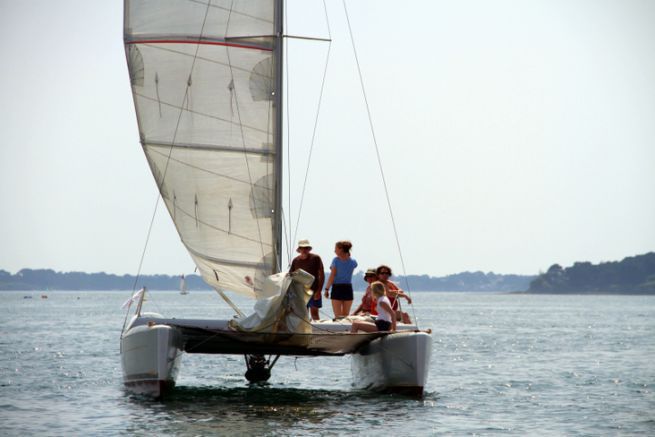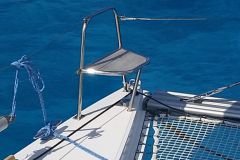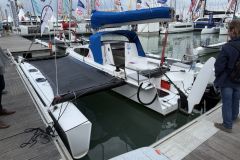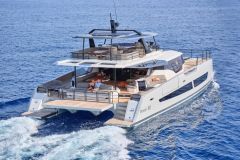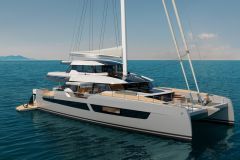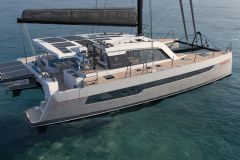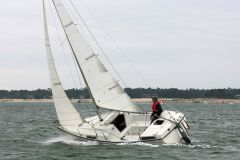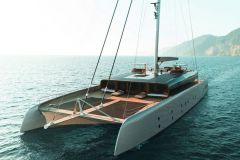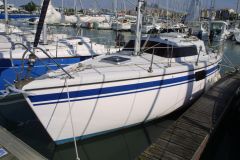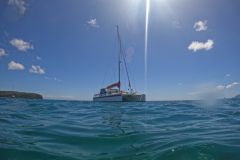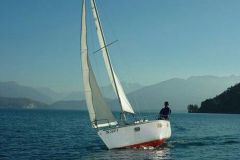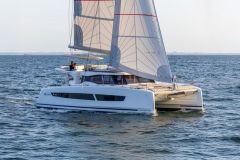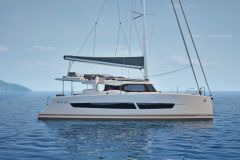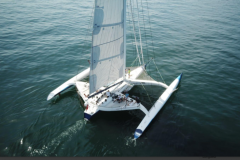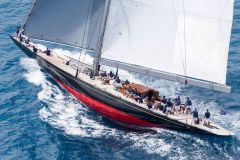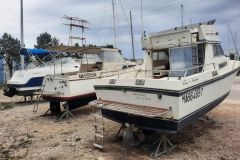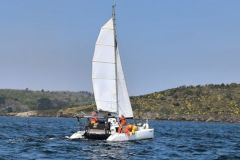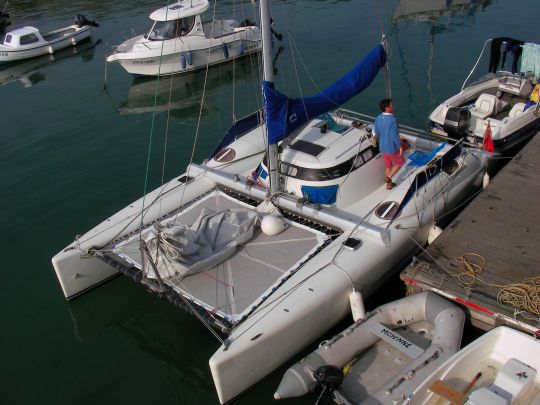
- Price: from 11,000 euros
- 60 units built from 1985 to 1990
The very slim hulls set the tone: priority to speed! As for comfort, we'll see later... That, in a nutshell, sums up this model's strong character.
The story of the Corneel 26 is first and foremost that of two men, Gildas Cornic and Eric Bruneel (who later launched the Neel trimarans). Corneel is the contraction of their names... After their first 18-foot catamaran, which sold around 100 units, in 1985 the pair, together with Jean-FranÁois Fountaine and Michel Joubert, developed a lively and fun day boat: the Corneel 26. The following year, it was awarded the title of Boat of the Year.
This dismountable catamaran is seductively simple, with fittings at the foot of the mast, and no boom or daggerboards. With its fixed fins limiting the draught to 70 cm, the Corneel 26 can beached or even beached for the duration of a tide.

Outstanding performance
Tuck in and go! The Corneel 26 glides along without restraint, and if the breeze exceeds 15 knots, it doesn't take long for the hull to ease into the wind, or even to come completely unstuck! The vacuum-bonded sandwich construction with bi-biased fabrics, which offers rigidity and light weight ‚euros less than a ton by weight ‚- is of course no stranger to this spirited behavior...
All the machine's regulars are unanimous: the 26 sails relatively safely on one leg. But be careful not to let the machine get the better of you: a few Corneels have capsized... Keep your sheet in your hand!
This advice is even more justified for the Sport version. With its wing mast and 8 m2 more sail area, the 26 becomes downright sporty. The S (Sport) version offers one to two knots more at all points of sail.
Suitable for summer weather
Ultra-simple, the deck layout offers efficient deck fittings, with just two blockers attached to the aluminum beams at the mast foot. The hard cockpit, despite the relative protection of the two hulls, is copiously rinsed by the spray in good breezes. Navigation aboard the Corneel 26 may still be exhilarating, but it's more suited to summer weather.
The boat's very low inertia forces the crew to conserve quite a bit of sail to tack and cross chop with ease. The outboard motor and its tilting chair suspended under the nacelle ‚euros it is equipped with an anti-mist deflector ‚euros will take the rel√®ve of the sails by flat calm.
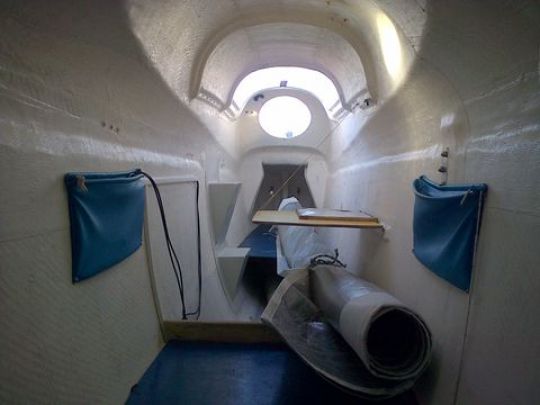
Rustic interior comfort
The accommodation could not be more basic: two single berths in each hull, with a mini navigation area to port, and a kitchenette to starboard. A few lockers and that's it.
Still, we're surprised by the height under the bars. 1.45 m is not ridiculous. Enough to cruise in coastal raid mode. The large cockpit and trampoline at anchor make perfect lounging areas. A Queschua-type tent can be pitched here. The shipyard even originally offered its own canvas shelter.
In 1988, Fountaine-Pajot realized that its model lacked a saloon and a double berth, and launched the Love version with a central cradle. In other words, a 1.90 x 1.35 m tatami convertible into a saloon, housed in a strange bubble, rather disappointing from an aesthetic point of view. These models, with their greater habitability and the privacy offered by the three separate living areas, were nevertheless quite successful and remain popular today.
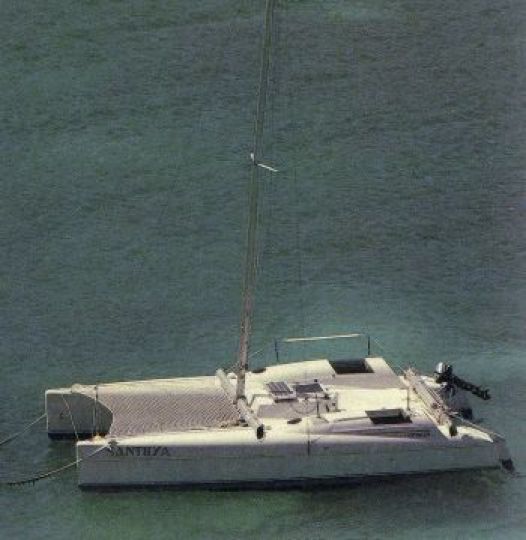
Bateaux.com diagnosis
Thanks to their simple construction and the absence of daggerboards, the hulls are worry-free. Ditto for the aluminum beams, mast profiles that don't seem to be subject to electrolysis. On the other hand, a few details need to be reviewed:
- the inclined stanchions of the first versions were certainly comfortable to rappel on, but got snagged and bent
- original tiller linkage and finish quality are more than basic
An amateur restoration job, which can be completed by replacing the fittings and, of course, the sails.

The benefits
- Robust structure
- Drawing always pleasant
- Excellent performance
Disadvantages
- Stanchions, rudder linkage and finish to be reviewed
- Can capsize in a fair breeze
- Aesthetically unsuccessful Love version
But what's missing?
Slightly wider berths and real rear skirts.
The equivalent today?
Not much... builders are now interested in much larger units. Even Aventura, a specialist in small catamarans, is no longer producing its Aventura 20, 23.5 and 28. On the small trimaran side, however, Astus, Tricat, Corsair and Quorning (Dragonfly) are well represented!

 /
/ 